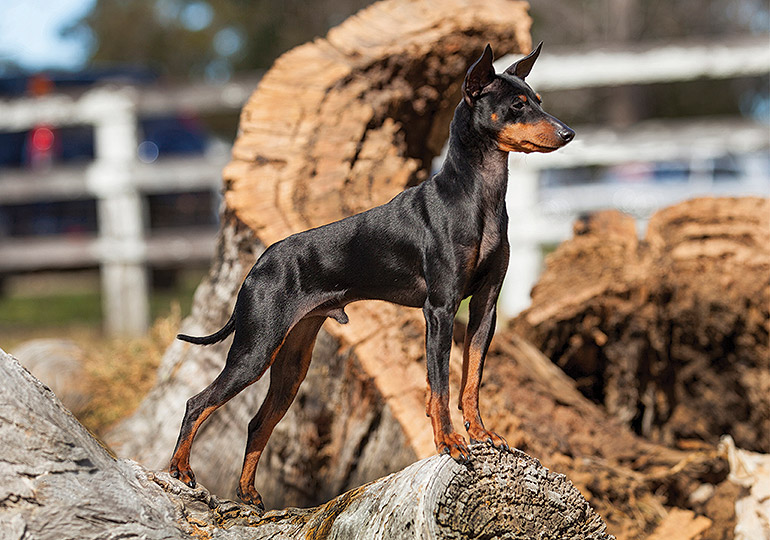
GROUP 1 - TOYS
The English Toy Terrier can be traced back through the centuries, having been bred from the Manchester Terrier, which was previously known as the English Black and Tan Terrier. Dr Caius mentioned the Black and Tan Terrier in 1570 when writing to a friend, and Dogs: Their History and Development, published in 1927, mentioned that the Black and Tan Terrier was described in The Hours of the Virgin in approximately 1500. The English Toy Terrier has had a chequered career, being used for rodent control in earlier times. It was likely found onboard ships and on farms, and was later used for sport.
In Australia the breed was quite popular around the 1960s, though it faded in popularity over time until the 1990s when there were only two breeding pairs left in the country. Since then a concerted effort has been made to boost the gene pool. Several key sires with links to Australia’s standard have been imported, which has vastly improved temperament, conformation and acceptance of the breed. Care has been taken to adhere to the correct English Breed Standard, while avoiding extremes in the breed and fashion fads.
The English Toy Terrier is a toy dog with terrier-like characteristics and no hint of frailty or weakness. Overall it is a very active dog that has a great zest for life. It is an alert, faithful and intelligent companion that is fast-maturing, mentally and physically. It is quick of eye, keen of hearing, brave and courageous. A completely dependable watchdog, the English Toy Terrier is rather suspicious of strangers, giving warning of any unusual noise or visitors.
The English Toy Terrier has a short, shiny black coat set off by trimmings of rich red-brown. So much attention has been paid to colour and markings that the breed apparently hasn’t changed much since the 1900s and is recognised by its ‘candle flame’-shaped ears. English Toy Terriers are 25 to 30cm at the shoulder, with terrier characteristics. Its long, slightly arched neck leads to a narrow and deep chest. It is slightly rounded over the loin.
The English Toy Terrier is relatively free from health issues and its average lifespan is 9–13 years. Dr Rob Zammit cautions that slipping kneecaps and poor hip joints can occur in English Toy Terriers. When buying a puppy, check that the parents don’t suffer from these problems.
The English Toy Terrier is easy to care for and requires bathing only when really necessary. It has a very short, single coat so very little brushing is required. A damp cloth will rejuvenate the gloss and sheen.
This breed is suitable for both the elderly and young active families, as it requires very little exercise. Although a daily walk will benefit both owner and dog, it is quite active and cat-like, with a tendency to exercise itself. Being a small dog it makes a good flat-dweller if space is restricted. Over the years people have tended to mollycoddle this breed; however, bearing in mind its origin as a rat hunter, it really is a terrier in a toy’s body.
The English Toy Terrier makes a great companion dog and just needs to be with you. It is not a dog to be left in the backyard and forgotten.
Words & Image supplied by John Wills.
Now you know a little about the English Toy Terrier, you may think that this is the dog for you. Before you make a decision, please make contact with the breed club or your State controlling body for purebred dogs. They will be able to give you information about available puppies and also suggest dog shows where you can see the breed and speak to breeders. In this way you will gain a better perspective of the English Toy Terrier and its needs, and whether this breed would suit your lifestyle.